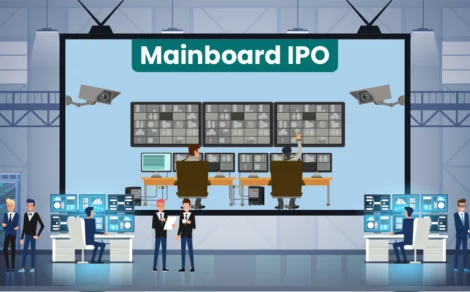The quick commerce landscape in India has transformed rapidly over the past two years, with companies promising deliveries in as little as 10 minutes. This revolution has changed how urban Indians shop for essentials, creating a $9.95 billion market opportunity by 2029.
While the convenience is undeniable, the underlying financial health of these companies raises questions for investors. Are these rapid deliveries sustainable in the long run without a clear path to profitability?
Understanding Quick Commerce Economics
The fundamental economics of quick commerce create an uphill battle for profitability. The business model operates on tight margins, with several factors contributing to the ongoing financial challenges:
- Each dark store requires substantial investment in infrastructure, inventory, and staffing.
- Maintaining a fleet of delivery personnel for 10-minute deliveries adds significant operational expenses.
- Most orders range between ₹450-₹500, leaving little room for profit after fulfilment costs.
- Aggressive discounting to attract and retain customers eats into margins.
- Price wars between major players further compress already thin margins.
These factors explain why quick commerce losses continue to mount even as the sector grows exponentially in terms of orders and revenue.
Swiggy Instamart: Growth at the Cost of Profitability
Swiggy Instamart losses have become particularly concerning for investors following Swiggy’s [NSE: SWIGGY] public listing. Recent financial results paint a concerning picture:
- Revenue Growth: Instamart’s operating revenue more than doubled year-on-year to ₹4,410 crore in the March quarter of FY25, showing impressive top-line growth.
- Mounting Losses: Despite this growth, operational losses ballooned to ₹962 Cr in Q4 FY25.
- Aggressive Expansion: Swiggy added 316 new dark stores in a single quarter—more than the previous eight quarters combined.
- Burn Rate: The company deployed ₹425 Cr in capital expenditure in Q4 FY25 alone.
- EBITDA Margin: Instamart’s adjusted EBITDA margin stood at -4.8% for Q4 FY25.
These numbers highlight how Swiggy Instamart losses are accelerating despite revenue growth, raising questions about the sustainability of this business model.
The Profitability Timeline: Expectations vs Reality
The road to quick commerce profitability appears longer than initially projected by industry leaders. While companies frequently suggest they are on the path to breaking even, the timeline keeps shifting:
- Initial Projections: Many players suggested profitability was just two to three quarters away back in 2023.
- Current Reality: Most experts now don’t expect Swiggy to achieve positive EBITDA until FY27.
- Blinkit’s Position: Even market leader Blinkit saw its adjusted EBITDA loss widen by 381% to ₹178 Cr in Q4 FY25.
- Shifting Goalposts: Swiggy revised its contribution margin breakeven deadline from three quarters to three to five quarters.
These continuous delays in achieving quick commerce profitability raise legitimate concerns for investors looking at the sector’s long-term viability.
The Competitive Landscape: A Race to the Bottom?
The intense competition in quick commerce has created what some analysts describe as a race to the bottom when it comes to pricing and promotions:
- Major Players: Blinkit (Zomato), Zepto, Swiggy Instamart, and BigBasket Now (Tata-owned) are competing aggressively.
- New Entrants: Amazon Fresh and Flipkart Quick are in pilot mode, potentially intensifying competition further.
- Market Share Battle: Blinkit currently leads with the largest market share, but all players are investing heavily to gain ground.
- Price Wars: Companies are offering steep discounts to capture market share, further delaying profitability.
- Consolidation Potential: Industry experts suggest a shakeout is inevitable, with only two to three players likely to survive long-term.
This competitive intensity creates both risks and opportunities for those investing in quick commerce startups, with market consolidation potentially creating winners and losers.
What Retail Investors Should Consider?
If you are contemplating investing in quick commerce startups or listed entities with significant quick commerce exposure, several factors warrant careful consideration:
- Cash Runway: Evaluate how long companies can sustain current burn rates with available funds.
- Path to Profitability: Assess realistic timelines for breaking even at the unit economic level.
- Scale Advantages: Companies with larger networks may achieve operational efficiencies sooner.
- Parent Company Support: Entities like Blinkit benefit from Zomato’s [NSE: ETERNAL] established infrastructure.
- Diversification: Companies relying solely on quick commerce face higher risks than those with multiple revenue streams.
As a retail investor, caution on quick commerce is advisable, given the sector’s unproven economics and delayed profitability timelines.
Future Outlook: Path to Sustainable Growth
Despite current challenges, the quick commerce sector has potential paths to sustainable operations:
- Increasing average order values beyond ₹500 could significantly improve unit economics.
- As dark store networks become denser, the delivery efficiency should improve.
- Higher-margin private label products could boost profitability.
- Additional revenue streams, like in-app advertising, could supplement delivery income.
- Advances in routing algorithms and inventory management can reduce operational costs.
Whether these improvements can offset the fundamental challenges of the business model remains the central question for Indian startup investments in this space.
Final Words
The quick commerce revolution has undoubtedly changed consumer behaviour in India’s urban centres, creating convenience previously unimaginable. However, the gap between growth metrics and financial performance requires investor sobriety.
While the sector will likely continue its expansion, the winners may be determined not by who grows fastest but by who achieves sustainable economics first. As you consider your investment strategy, balance the undeniable potential of this market with the very real challenges of achieving profitability in a highly competitive landscape.
Visit Torus Digital for comprehensive market insights tailored to your financial goals.


